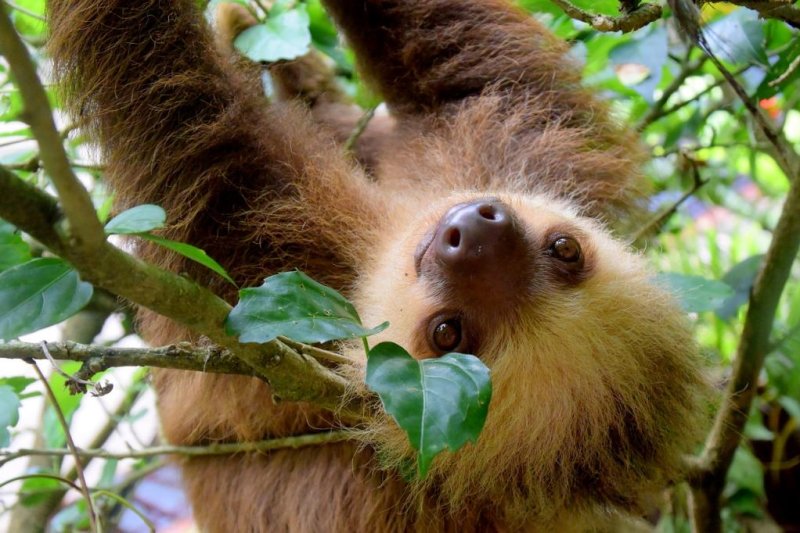Species that spend most of their time in positions and movements that put constant tension on their arms, like sloths and tree-loving apes, feature greater variation in the number of vertebrae. Photo by
pixabay/CC
May 14 (UPI) -- According to a new study, vertebrae numbers vary the most among mammals that spend much of their life hanging and swinging from tree limbs, like apes and sloths.
Previously, scientists have pointed to differences in running speed as the source of vertebrae diversity, but the latest findings, published this week in the journal Nature Ecology and Evolution, undermine such a connection.
Despite the tremendous anatomical diversity present among mammals, the number of neck and back vertebrate is quite consistent. It's a phenomena known as evolutionary stasis.
"Nearly all mammals have the same number of cervical vertebrae, no matter how long or short their necks are -- humans, giraffes, mice, whales, and platypuses all have exactly seven cervical vertebrae," Jeff Spear, a doctoral student at New York University and co-author of the new study, said in a news release.
But while limited, vertebrate numbers do feature some variety among mammals. While most mammals have 26 or 27 cervical, thoracic and lumbar vertebrae, humans have 24 CTL vertebrae.
Previous attempts to decipher the source of vertebrae diversity among mammals focused on speed. Speedier animals, scientists predicted, were more likely to exemplify evolutionary stasis, while slower animals could experiment a bit with neck and back vertebrae numbers.
Authors of the latest study suggest earlier hypothesis about the relationship between vertebrae diversity and speed were based on mammalian samples sizes that were too small. For the new study, scientists broadened the scope of their analysis, while also accounting for evolutionary relatedness among mammalian species.
Researchers tallied the vertebrae of thousands of specimens representing some 300 mammal species. Scientists compared the relationship between vertebrae variation and several physical and behavioral traits, including speed, habitat, locomotion, spine mobility, posture and limb use.
The analysis showed vertebrae number varied greatest among species that don't run, walk and jump, but instead are adapted to suspensory locomotion -- hanging and swinging -- and other "antipronograde" behaviors.
The classic body plan for most mammals requires a mobile back. Mammals that experimented with alternative designs and differing numbers of vertebrae risked inefficient locomotion, and most such experiments, authors of the new study contend, were weeded out through natural selection.
"Mammals that depart from this body plan, however, such as apes adapted for antipronograde behaviors, are more free to vary in their number of CTL vertebrae," said NYU anthropologist Scott Williams. "Our own atypical number of CTL vertebrae, then, may be the consequence of our evolutionary history as antipronograde climbers."















